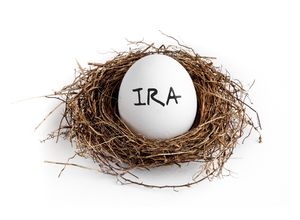Individual Retirement Accounts have been around long enough now that many Americans are learning what happens when they inherit an IRA. It’s not always good news. If the owner has not filed an up-to-date beneficiary form, the heir of the estate risks losing a major portion of the IRA value to taxes and fees.
 The Employee Benefit Research Institute (EBRI) reports the average IRA value is close to $94,000. The EBRI also says there are nearly 15 million IRA accounts held by more than 11 million people. With total assets of more than $1 trillion, it’s important to make certain that, should the owner die, the IRA doesn’t lose its value upon transfer to a new owner.
The Employee Benefit Research Institute (EBRI) reports the average IRA value is close to $94,000. The EBRI also says there are nearly 15 million IRA accounts held by more than 11 million people. With total assets of more than $1 trillion, it’s important to make certain that, should the owner die, the IRA doesn’t lose its value upon transfer to a new owner.
Advisors warn that many IRA owners mistakenly believe because they have a will, the person(s) they list as their heir(s) will automatically receive the IRA to use as a savings tool or turn into cash in whatever manner they wish. Yet, without a specific and up-to-date IRA beneficiary designation form for each IRA, the beneficiary may be forced to empty the account right away risking taxes and penalties; and may even be bumped into a higher income tax bracket. Some states require the accounts to go through probate court when there is no beneficiary form.
IRA owners should fill out what is a very simple beneficiary form separate from their will. That way, when the owner dies, the designated beneficiary is able to determine the best distribution strategy over his or her lifetime. A new beneficiary form is needed any time an IRA account is changed or updated, or the account is moved to a new custodian.
Typically, IRA beneficiaries must take distributions during their lifetime. Inherited traditional IRAs require taxes to be paid on distributions. Rollover, SEP, and SIMPLE IRAs are treated the same way. Beneficiaries are not required to pay taxes on distributions from an inherited Roth IRA.
Generally, surviving spouses have several choices including even disclaiming up to 100% of the IRA assets, which, besides avoiding extra taxable income, enables their children to inherit the IRA assets. But, if the spouse decides to take a lump sum distribution, or begins distributions on a traditional IRA, taxes must be paid.
Non-spouse beneficiaries have fewer choices. Among them, including taking the lump sum amount and paying a large share in federal taxes; disclaiming all or part of the assets for up to 9 months after the previous owner’s death; or begin taking taxable distributions from the account.
If you inherit an IRA, you cannot roll it over into your own IRA. You must also make certain it is re-titled as an inherited IRA. If you move the IRA to a new custodian, make certain it is made as a “trustee-to-trustee” transfer or it will be considered as a taxable total distribution, thereby, ending the account as an IRA. There are deadlines for your actions and you can even face the dreaded 50% penalty if you don’t make a required withdrawal in time.
To ensure you leave as much of your IRA asset as possible to whom you choose, or if you inherit an IRA, consult your financial advisor for the best steps to take to lessen the taxes and maximize the advantages of these retirement accounts.
If you have any questions about your financial savings plans, beneficiaries and the tax consequences of your choices, please contact us at McRuer CPAs.
 is now
is now 
